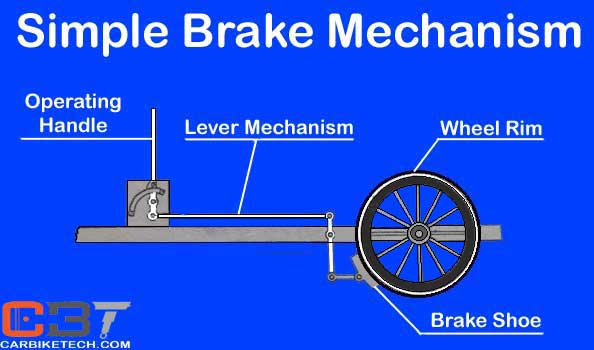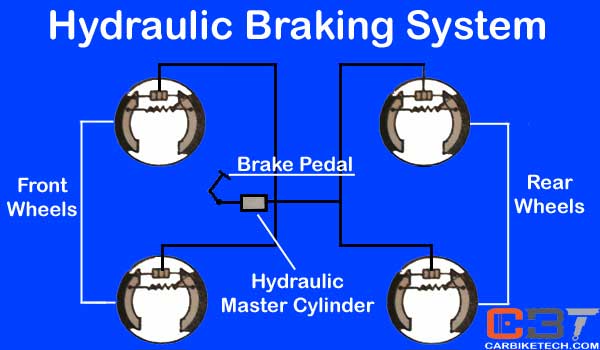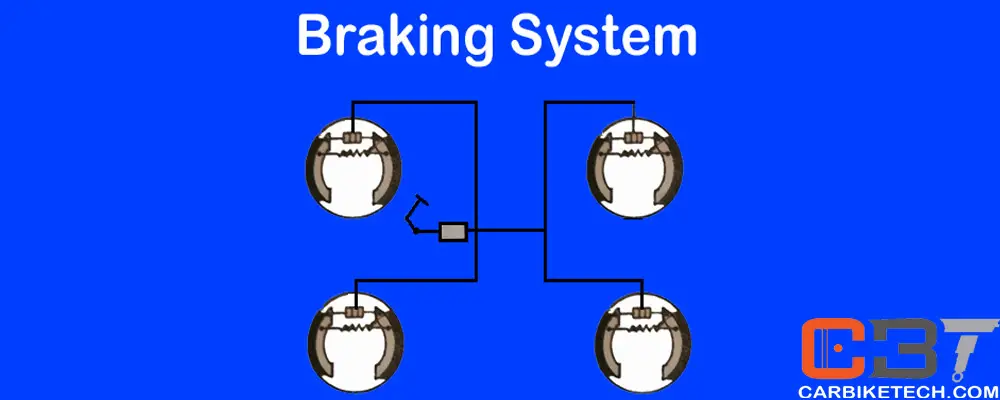Brake System Function
The function of vehicle brake system is to stop or slow down the moving motor vehicle or prevent it from moving when in stationary position. All the braking systems use the force of friction for their operation. Friction opposes the relative motion of the bodies that are in contact with each other. It always acts opposite to the force of motion. When you use energy to overcome the friction, it creates heat. So, the components such as brake liners, pads, drums and discs get heated while in operation.

The force of friction depends upon the nature of surface materials in contact as the friction force presses them together to achieve braking effect. It also depends upon the speed of their relative motion. However, the more these bodies are pressed together, the greater is the friction between them. However, the faster they move in relation to each other, lesser friction will be created between them. The ratio of the force of friction to the force holding two bodies in contact is a constant of two surfaces. It is known as coefficient of friction.
Motor vehicle brake system:
Furthermore, a brake system in motor vehicles uses brake shoes and a supporting wheel called a drum. So, this type of system is known as the ‘Drum Brake’. The brake shoes force themselves against the brake drum and causes friction. In majority of designs, the manufacturers use two brake shoes with each drum that forms a complete braking system at each wheel for better braking effect.

Design:
Manufacturers mount two brake shoes in such a way that they rub against the inner surface of the brake drum that forms an internal expanding brakes. The drum surrounds the entire brake mechanism to protect it from dust and moisture. The wheel-attaching bolts on the drum connect wheel with drum. The backing plate holds the brake assembly to the axle and completes the braking system attachment. It acts as a base for fastening the brake shoes and its operating mechanism.
Brake System Purpose:
It serves two main purposes.
- To help controlling the speed of the vehicle and to stop it when and wherever you need to.
- To hold the vehicle in place without the presence of a driver after it is brought to a complete stop.
To achieve these purposes, most vehicles have two independent braking systems.
They are –
- Service brake operated by a foot pedal
- Parking or emergency brake operated either by hand or foot lever
Classification:
Depending upon the method of operation, the manufacturers classify these systems into three main categories.
With respect to application, these are –
1. Foot Brake
2. Hand Brake
With respect to method of braking contact:
1. Internal Expanding Brakes
2. External Contracting Brakes
Brake systems are classified according to how the brake force is transmitted from the brake pedal to the brake shoes.
- Mechanical
- Power assisted
- Hydraulic
- Pneumatic
In respect of the nature of power employed:
1. Vacuum brakes
2. Air brakes
3. Hydraulic brakes
4. Hydrostatic brakes
5. Electric brakes
With respect to the method of applying of brake force:
1. Single acting
2. Double acting
According to the power transmission:
1. Direct acting brakes
2. Geared brakes
According to the power unit:
1. Cylinder brakes
2. Diaphragm brakes
The brake system is also further classified by the number of wheels on which the brakes are applied.
They are –
- Two-wheel brake (obsolete now)
- Four wheel brake
- Six wheel brake
The system is also classified according to the shape of the braking mechanism.
So, a motor vehicle could have any combination of the above-mentioned systems and related mechanisms. However, a modern car employs computer-controlled sophisticated brake technologies such as the Anti-Lock Braking System, Cornering Brake Control, and Electronic Stability Control (ESC), etc. In conclusion, the braking system effectively controls the speed of the vehicle and helps to bring it to a complete halt safely.
Bosch, Brembo, and WABCO are some of the reputed manufacturers of brake components in the world.
Watch brake system in action here:
Read More: How Adaptive Braking works in a car?>>
